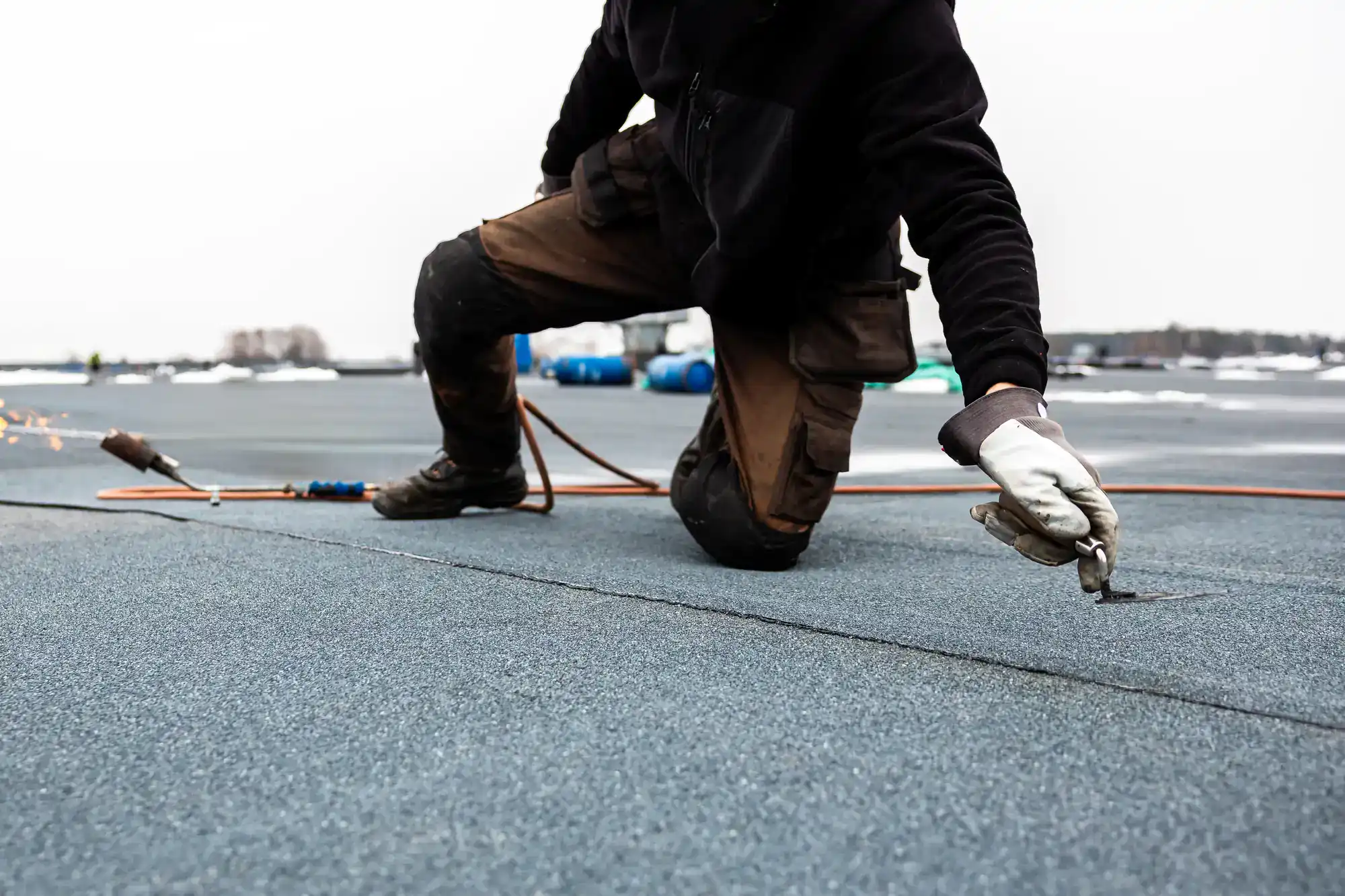
Hear from Our Customers
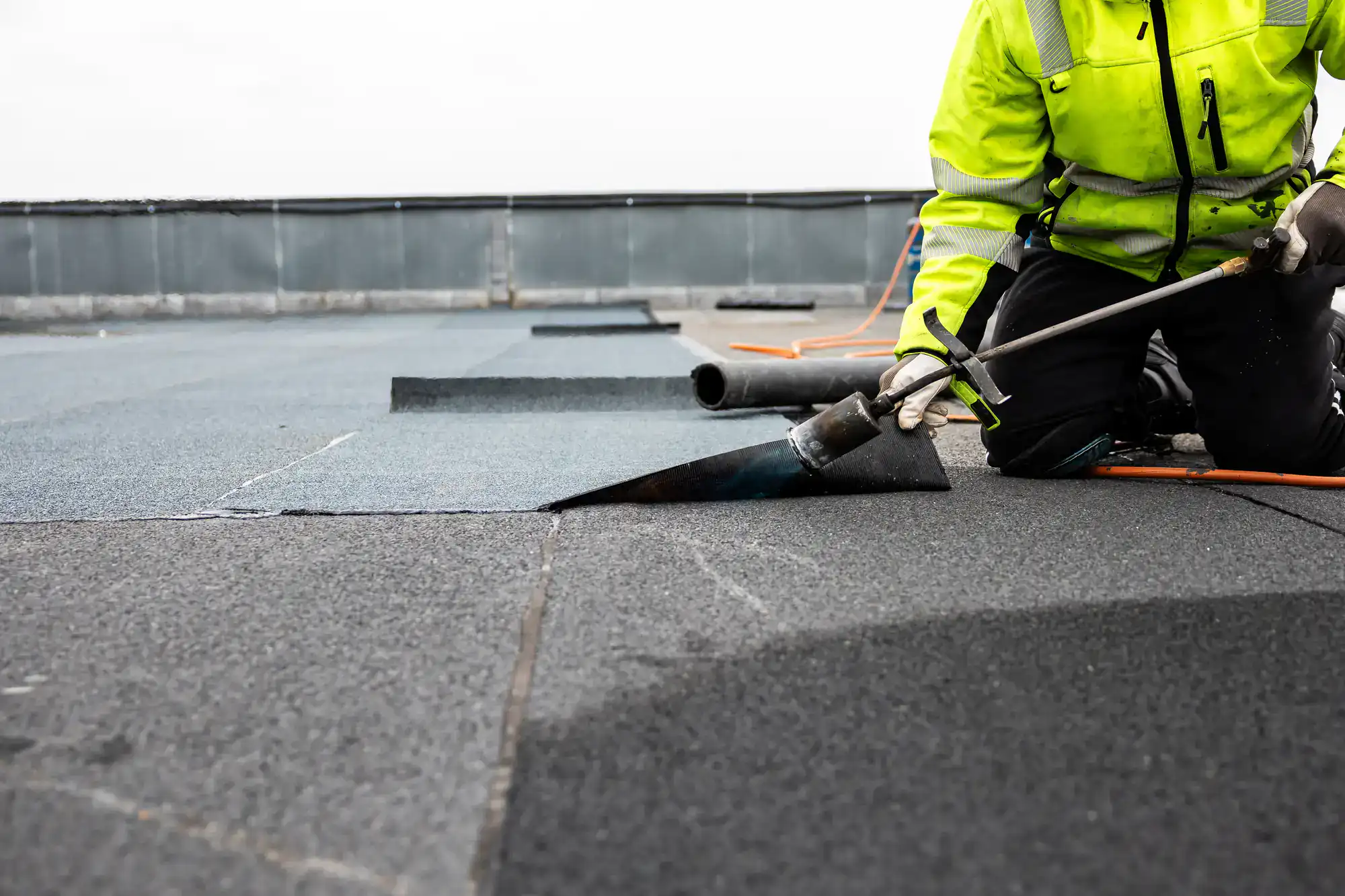
Your flat roof stops being a constant source of stress. No more emergency calls during storms, no more water damage spreading through your building, no more wondering if this repair will actually hold.
You get a roof system that handles whatever Long Island throws at it. Heavy rains roll off without finding their way inside. Snow loads sit securely without causing structural concerns. Your HVAC units, solar panels, or rooftop equipment operate on a stable, reliable platform.
The real peace of mind comes from knowing you’ve got decades of protection ahead, not just another temporary fix that’ll fail when you need it most.
Expressway Roofing and Chimney Inc has been the go-to flat roofing contractor for Nassau and Suffolk County properties since 2001. We’ve seen every type of flat roof failure Long Island can produce, from hurricane damage to ice dam destruction.
What sets us apart is our diagnostic approach. While most contractors focus on patching visible problems, our team identifies root causes. We know that 50% of commercial roof leaks actually originate from HVAC units and rooftop equipment, not the roofing itself.
This experience matters when you’re dealing with Long Island’s unique challenges—coastal storms, temperature swings, and the salt air that accelerates material breakdown. Our factory-trained technicians understand how these conditions affect different roofing systems and design solutions accordingly.
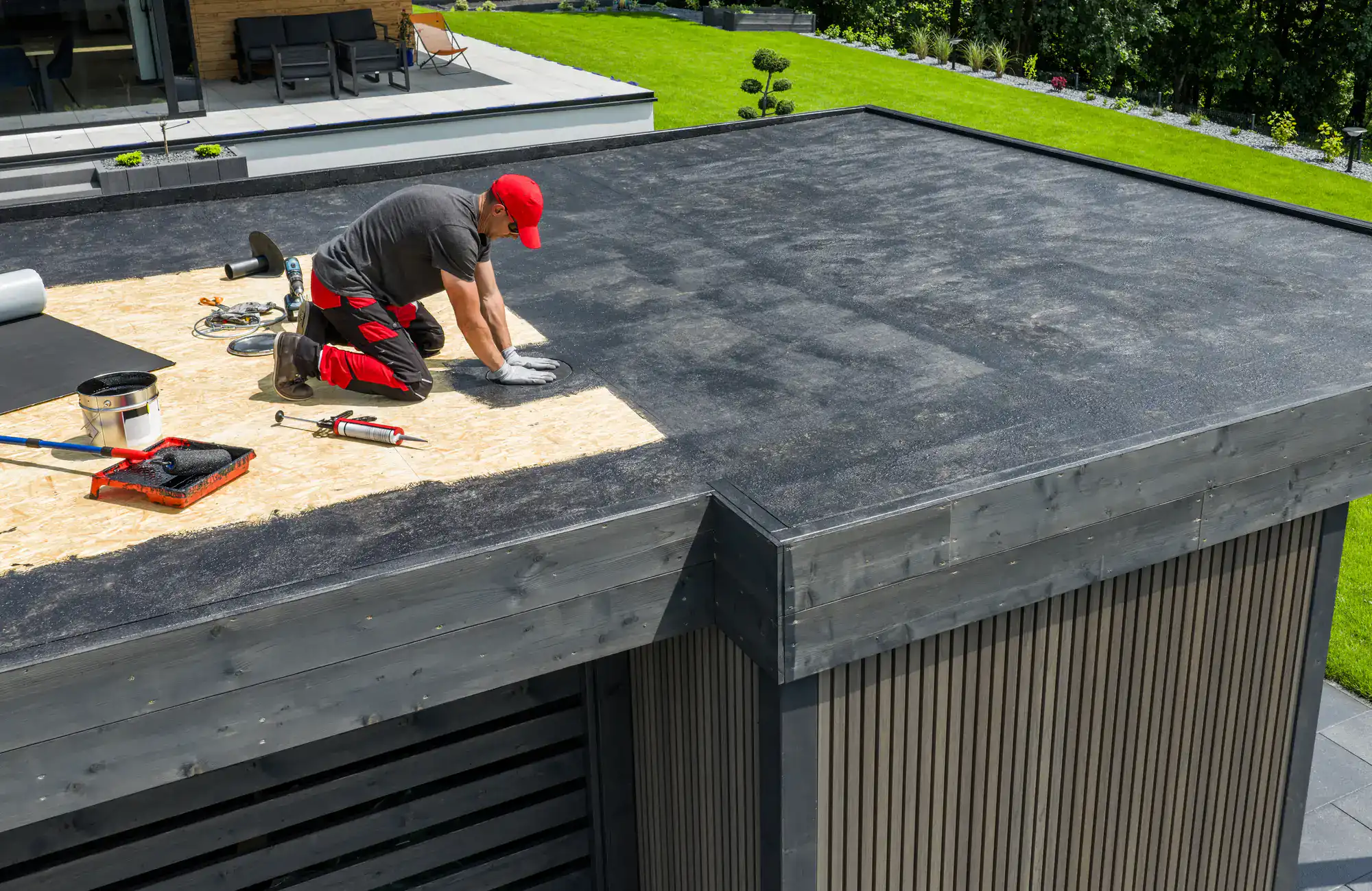
The process starts with a comprehensive inspection that goes beyond the obvious leak spots. Our technicians examine your roof membrane, flashing, drainage systems, and all rooftop penetrations to identify current problems and potential failure points.
Next comes the honest assessment. We’ll tell you whether you need a simple repair, a coating system, or a complete replacement. If your roof has reached the two-layer limit required by building codes, we’ll explain your options, from cost-effective coating systems to full tear-off replacements.
The actual work depends on your specific situation. For repairs, we use manufacturer-approved materials and techniques that create permanent fixes, not temporary patches. For replacements, we remove all existing materials down to the deck, inspect and repair the substrate, then install your new system with proper insulation and drainage. Every project includes thorough cleanup and a final inspection to ensure everything meets our standards and warranty requirements.
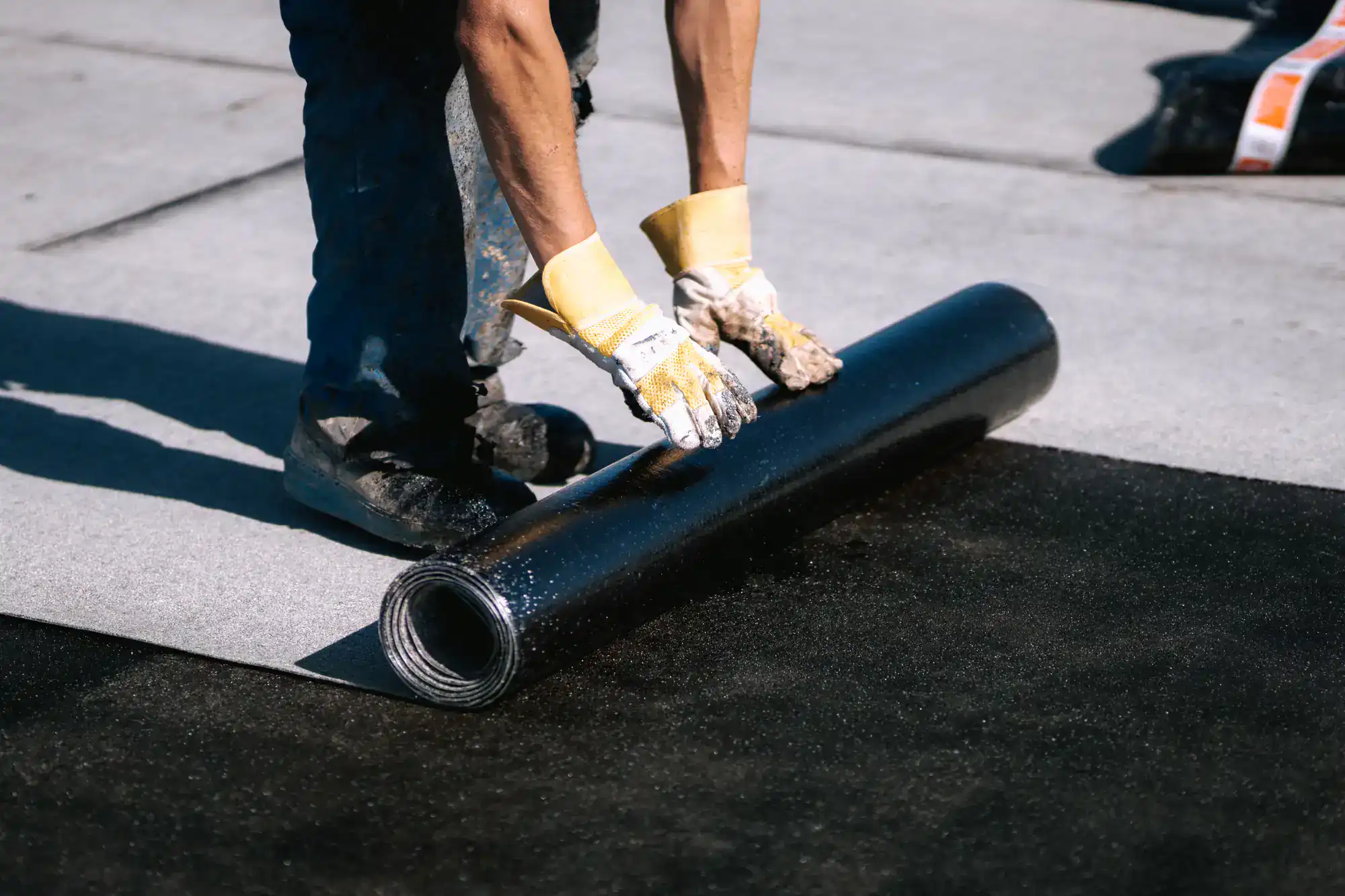
Ready to get started?
Your flat roofing system choice matters more than most people realize, especially on Long Island where coastal conditions accelerate wear and tear. We install three proven systems, each suited to different building types and budgets.
TPO (Thermoplastic Polyolefin) offers excellent energy efficiency with its white, reflective surface that reduces cooling costs. It’s lightweight, durable, and handles Long Island’s temperature extremes well. Most commercial buildings benefit from TPO’s combination of performance and cost-effectiveness.
EPDM rubber roofing provides proven longevity with over 50 years of track record. It handles ponding water better than most systems and resists the UV exposure that’s intense near the coast. EPDM works particularly well for buildings with complex rooftop equipment layouts.
Modified bitumen combines the reliability of traditional built-up roofing with modern polymer technology. It’s ideal for buildings that need extra durability or have specific structural requirements. The multi-layer system provides redundant protection against leaks.
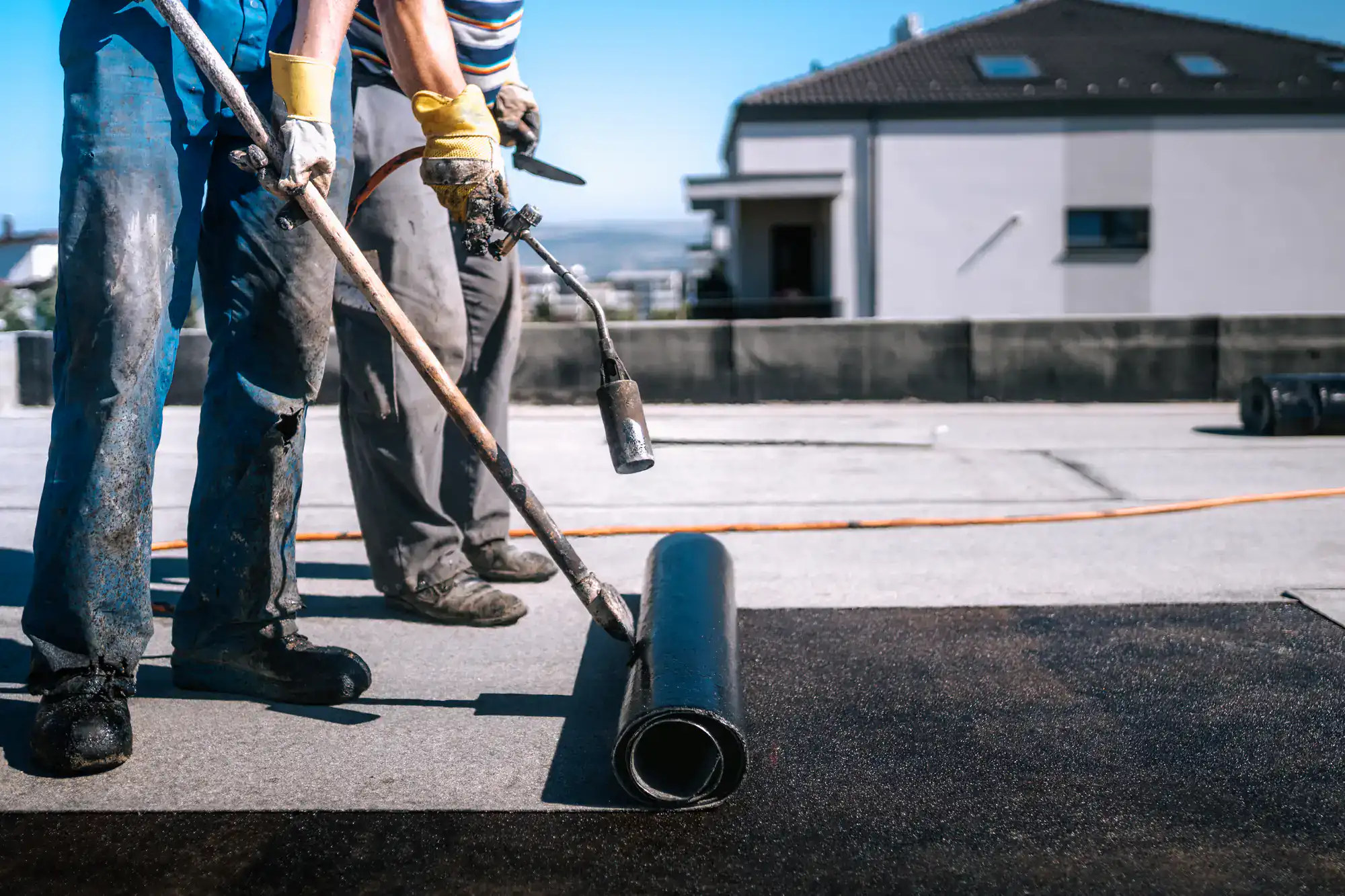
Quality flat roofing systems properly installed in Long Island conditions typically last 20-30 years, though this varies significantly based on the specific system and maintenance. TPO systems often reach 25-30 years with proper care, while EPDM can exceed 30 years due to its superior resistance to coastal conditions.
The key factors affecting lifespan here include exposure to salt air, which accelerates material breakdown, and the freeze-thaw cycles that stress seams and flashing. Regular maintenance extends these lifespans considerably. Buildings that skip annual inspections and minor repairs often see system failures in 15-20 years, while well-maintained roofs regularly exceed manufacturer expectations.
Modified bitumen systems offer excellent longevity when properly maintained, often lasting 25-35 years. The multi-layer construction provides redundancy that’s particularly valuable during Long Island’s severe weather events.
The cost differences are substantial, which is why accurate diagnosis matters so much. Simple repairs typically run $300-800 per problem area, depending on complexity and accessibility. These work well for localized damage or recent leaks.
Coating systems cost $5-8 per square foot and can extend your roof’s life by 10-20 years when applied to structurally sound membranes. This option works particularly well for roofs that have reached the two-layer building code limit, avoiding the expense of complete tear-off.
Full replacement ranges from $9-20 per square foot, depending on your building’s size, height, and complexity. While this represents the largest upfront investment, it provides the longest-term value with warranties up to 30 years. Buildings with multiple previous repairs or structural issues typically benefit most from complete replacement.
Most flat roof repairs fail because contractors treat symptoms instead of identifying root causes. They patch the visible leak without addressing why water reached that spot in the first place. Poor drainage, failed flashing, or rooftop equipment issues cause most recurring problems.
Another common failure point involves using incompatible materials or shortcuts during installation. Temporary sealants might stop immediate leaks but break down quickly under Long Island’s temperature extremes and UV exposure. Proper repairs require manufacturer-approved materials applied according to specifications.
The biggest issue is inadequate surface preparation. Successful repairs need clean, dry, properly primed surfaces. Contractors who skip these steps to save time create repairs that fail during the first major storm. Quality repairs take longer initially but provide permanent solutions that won’t need constant attention.
Several factors indicate when replacement makes more sense than continued repairs. If your roof already has two layers of material, building codes require complete removal before adding new roofing. Multiple leak areas, especially if they’re spreading or recurring, often signal system-wide failure.
Age plays a crucial role in this decision. Roofs over 20 years old with ongoing problems typically benefit from replacement rather than continued repair investments. The cumulative cost of frequent repairs often exceeds replacement costs within a few years.
Structural issues like soft spots in the decking, widespread membrane shrinkage, or failed insulation usually require complete replacement. A professional inspection can identify these conditions and provide honest guidance about whether repairs will provide adequate long-term value or just postpone inevitable replacement.
Buildings with extensive rooftop equipment benefit most from EPDM or modified bitumen systems due to their superior resistance to punctures and ability to accommodate equipment vibration. These systems handle the foot traffic required for HVAC maintenance without developing leaks.
TPO can work well for rooftop equipment applications, but requires careful installation around penetrations and may need additional protection in high-traffic areas. The heat-welded seams provide excellent waterproofing, but the membrane can be more susceptible to damage from dropped tools or equipment installation.
The key consideration is proper flashing and equipment curbing. Regardless of membrane type, rooftop equipment installations require specialized flashing systems that accommodate thermal movement and vibration. Most leak problems around equipment result from inadequate flashing rather than membrane failure, which is why professional installation with proper equipment curbs is essential.
Emergency response time depends on storm severity and damage extent, but our 24/7 service typically provides same-day temporary protection for active leaks. Permanent repairs usually follow within 24-48 hours once conditions allow safe roof access.
Temporary measures include emergency tarping, quick-setting sealants, or temporary membrane patches that stop immediate water intrusion. These solutions protect your building contents and prevent secondary damage while permanent repairs are planned and materials are obtained.
Permanent storm damage repairs often take 2-5 days depending on the affected area and material availability. Complex damage involving structural issues or multiple roof areas may require longer timelines, but the initial emergency response prevents ongoing water damage. Having established relationships with material suppliers allows faster access to necessary components during high-demand periods following major storms.